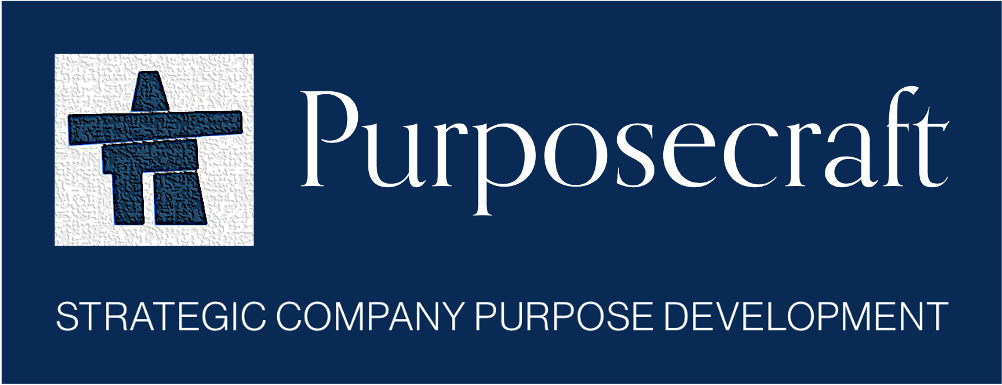Purpose 2.0 - Unifying culture and strategy
The tension between culture and strategy
We all know how vital it is to manage culture. Yet the myriad influences on culture, internal and external, make it hard to do with precision. Meanwhile the imperative for avoiding bad outcomes means culture initiatives are often more associated with complying than performing. This can drive culture down the management agenda and make it hard to drive engagement. Discussions of culture and strategy are often polarised by a failure to reconcile performance and accountability.
No company is genuinely sustainable if it is not performing. In a competitive world this means outperforming other firms in creating customer value. In a violently changing world, and with ever-increasing public accountability, it relies on societal alignment. Yet often, the strategies of firms are not written in context of the customer, and less-so, society. More often, strategy is written from an internal perspective – a list of whats and hows, lacking a who or why. Hardly surprising that strategy and culture are distant agenda items.
Purpose holds the key, in spite of misconceptions
Purpose, as the name suggests, should be the missing link. In theory, purpose sits atop the strategy of any firm: a compelling, externally grounded, long-term lens for developing the strategy, and in turn, the requisite culture. In reality, it doesn’t in lots of firms.
In 2019, Deloitte found “Purpose-driven companies witness higher market share gains and grow three times faster on average than their competitors, all while achieving higher workforce and customer satisfaction.” A 2-second Google search will yield pages of results affirming this view.
Yet it seems that having a purpose and being purpose-driven are not the same thing. Indeed the elusive element for many companies appears to be the “-driven”. In 2020, McKinsey found that fewer than half of company purposes are activated and aligned with employees’ motivations.
A recent PWC survey of almost 2,000 CEOs reported “serious deficiencies in corporate purpose statements”. According to the survey, 93 percent of respondents failed to state why their company is in business, and 95 percent of respondents “neglected to mention a core problem they endeavor to solve or to reference their organization’s founding histories in a way that could further illuminate the purpose for which their organization exists or why it was founded.”
‘Good’ is a standard of doing business
This missed opportunity results from a misapprehension about purpose. The race to be “good”, in the sense of greater societal integration, has obscured the need to offer something distinctive to the market - critical for sustainable performance. The purpose lobby has not helped itself by diminishing the profit imperative that defines every company - the very basis of GDP. This has helped relegate purpose to a communications and CSR activity in many firms, breeding a damaging stereotype of vacuous purpose statements.
Sustainability, CSR and ESG are often mistakenly conflated with purpose. Whilst each of these may be essential in the fulfilment of the firm’s purpose, they cannot define the unique value created by the firm. Many more firms interpret purpose at a category or industry level. Two of the world’s largest insurance groups state that their purpose is to “protect what matters”.
Foundational evidence showing how a firm has credibly arrived at its purpose – based on characteristics not shared by other firms – is the critical factor in inspiring employees. Qualifying the firm’s special cause through hard evidence of its reality, whilst not easy, tells employees that they work in an organisation worth committing to. Purpose-driven firms appear to harness not only the satisfaction of employees, nor merely their engagement, but their inspiration. If the difference seems trivial, consider the findings of Bain & Company whose 2015 study showed that inspired employees, those deriving meaning from their firm’s purpose-led mission and leadership, are 225% as productive as satisfied employees. This may help explain the stronger rate of value creation associated with purpose-driven companies.
The anatomy of a purpose-driven firm
When defined as the firm’s sustainable point of value creation, purpose is the lens that reconciles performance and accountability.
When the source of value creation is based on a societal opportunity, as opposed to a market or industry opportunity, it provides strategic direction and supports consistency, as markets and industries continually change. But for this to be sustainable by the firm, it be also be ownable. Drawing on demonstrable evidence of the firm’s unique characteristics and history in order to generate the purpose, casts defining values and associated behaviours into relief. This work forms the basis of the organisation’s identity and culture.
Culture in purpose-driven firms is encoded in principles that keep the purpose in daily focus and enable its fulfilment. In other words, culture is associated with unlocking the source of value creation, and is therefore intrinsic to the evolving strategy and performance of the firm.
In 2014 I was asked by the Chief Executive of an S&P 500 corporation to help establish the purpose of his global organisation, which had been built through acquisition over several decades. I’ve since found that mature firms turn to purpose for many reasons: to unite a fragmented organisation, to find added value in a commoditized arena, or to overcome strategic wear-out. In this particular case, these were all factors, and so the answer demanded rigour, transparency and stakeholder intimacy with the purpose development. Today the purpose of that particular firm unifies its culture and acts as a lens for everything the combined group does.
Defined properly, purpose sets out why and how a firm will remain valuable: vital for investors, employees and boards - transcending strategy and culture.
Questions for boards, NEDs and senior leaders to consider about their firm’s purpose:
1. Could your firm’s purpose be claimed by a competitor?
2. Is it recognized as the firm’s source of value creation?
3. Has it made an impact that employees recognize?
4. Does it enhance customer value?
Purposecraft provides advice, consulting and training in strategic company purpose development.
